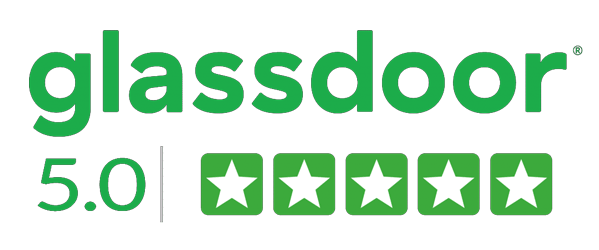
Quick Navigation
What is the definition of an Employee Handbook & what is it used for?
The employee handbook is a gathering of all important information and knowledge the employees need to be aware of. HR should include the organization’s vision, mission, values, policies, procedures and culture.
It will work as a guide for employees and new candidates alike. An employee handbook provides a complete source for new hires, which is why it is crucial to ensure all new candidates receive their handbook in the onboarding phase.
After offering the candidates their copy of the employee handbook, it would be better to ask for a written acknowledgement that they have received and read it.
It will help pave the way for the new hires in their journey in the company. They will know ahead of any code of conduct needed, the importance of diversity, their position in the structure of the organization and their obligations and rights in their new company.
What is the connection between HR and Employee Handbook?
Your HR should always keep the employee handbook updated now and then. Whether you have an established company or you are starting a new startup your handbook should be revisited to keep it fresh with your company’s information regarding the mission, vision, and overall goals.
Why the Employee Handbook is important & is it legally required?
It is worth noting that the staff handbook is not legally required, however, it still has various benefits to reduce any illegal misconduct in the future. According to your company’s needs and structure, you need to determine the specific details to include in the employee handbook. Nevertheless, there are still common important aspects to make sure they are available in the handbook.
The Employee Handbook’s 3 Importance:
The employee handbook has various advantages for your organization and your employees alike. Partnering with an HR agency that has the expertise to carefully create the right staff handbook for your company is key to creating a positive working environment.
1- A Coherent Onboarding Experience
The staff handbook should set clear expectations for the employees when joining your company. The onboarding phase and a complete employee handbook remove any uncertainties and will provide context for your employees’ questions.
2-A Long-Term Vision for the Company and Employees
Employees will feel a great sense of ownership towards your company when you communicate your long-term goals and plans. They will start aligning their goals and achievements with your goals to accomplish their dreams. In turn, they will stay motivated and productive.
3-Align Business Playbook with Staff Handbook
A business that depends on accurate business plans and strategies ensures success in the long run. The staff handbook will establish the business playbook and the key to achieving success in the organization. In the meantime, employees will understand their benefits and rights from the first day.
6 things that must be in the Staff Handbook in the UK?
1-A Brief Introduction to the Organization
A new employee would be curious to understand the culture of the new organization. Establishing the company’s culture, vision and mission early on in the handbook can set the tone for the new candidates in their onboarding process.
2-Compliance Rules
it is better to point out all the compliance rules the employees are required to follow to ensure safety and adherence. Your new hires should understand any code of conduct to follow so you can help them avoid any confusion.
3-Data Protection
Before starting their job, the employees should be thoroughly informed of the process of handling data. The staff handbook should explain all that is related to working, storing and accessing data. Each employee should know the level of data permitted to their position and how to access data. If you are implementing a work-from-home policy, you should break down the process of requesting and accessing data remotely.
4-Diversity and Anti-Discrimination Policies
The staff handbook will be a guide to ensure acceptance across employees regardless of their backgrounds and cultures. Employees should know how they can report any discrimination or unethical conduct. HR should consider including regular training for all employees to ensure a healthy environment free of any discrimination. Maintaining culture-enrichment sessions besides the staff handbook, your employees will feel satisfied and safe in your working environment and that will increase your company’s retention rate.
5-Time off Policy
Leaves are part of the employees’ rights. There are a lot of circumstances and times employees would need to use their leaves. The staff handbook should explain the policy for annual leaves, maternity and paternity leaves, and sick leaves. Moreover, it should include the process of requesting and submitting the leave so it would take its usual approval cycle.
6-Remote and Hybrid Work Policy
Many candidates now appreciate work-from-home flexibility. It helps with work-life balance and that in return will boost their productivity. Your role as HR is to highlight the adoption of flexible working models and to include the policy to request and be eligible for remote work. Flexible work should be clear to all employees regarding how to maintain communication and data protection while working from home.
How to Create a Comprehensive Employee Book for a Small New Business?
As a startup, you need to create a good onboarding experience for new employees to establish the company’s culture. Here are the best practices for creating a staff handbook.
- Consult a professional HR agency to help create the right handbook.
- Include your legal team to ensure it is aligning with your legal department.
- Make sure to have a simple and clear staff handbook that requires no further clarification.
- Communication is key. Your employee handbook should be accessible to all employees.
- Ensure constant updates for the staff handbook and that all updates are communicated clearly.
- Request feedback from employees about the staff handbook and welcome changes in case of outdated information or not very clear policies.
- Make sure that the staff handbook addresses everyone in the organization.
The conclusion
Accordingly, now is the best time to start creating your employee handbook or revisit it if it was not updated for a long time. You should start by giving a timeframe for finishing the handbook so you can communicate it with your team once it is ready.
Quick Navigation


